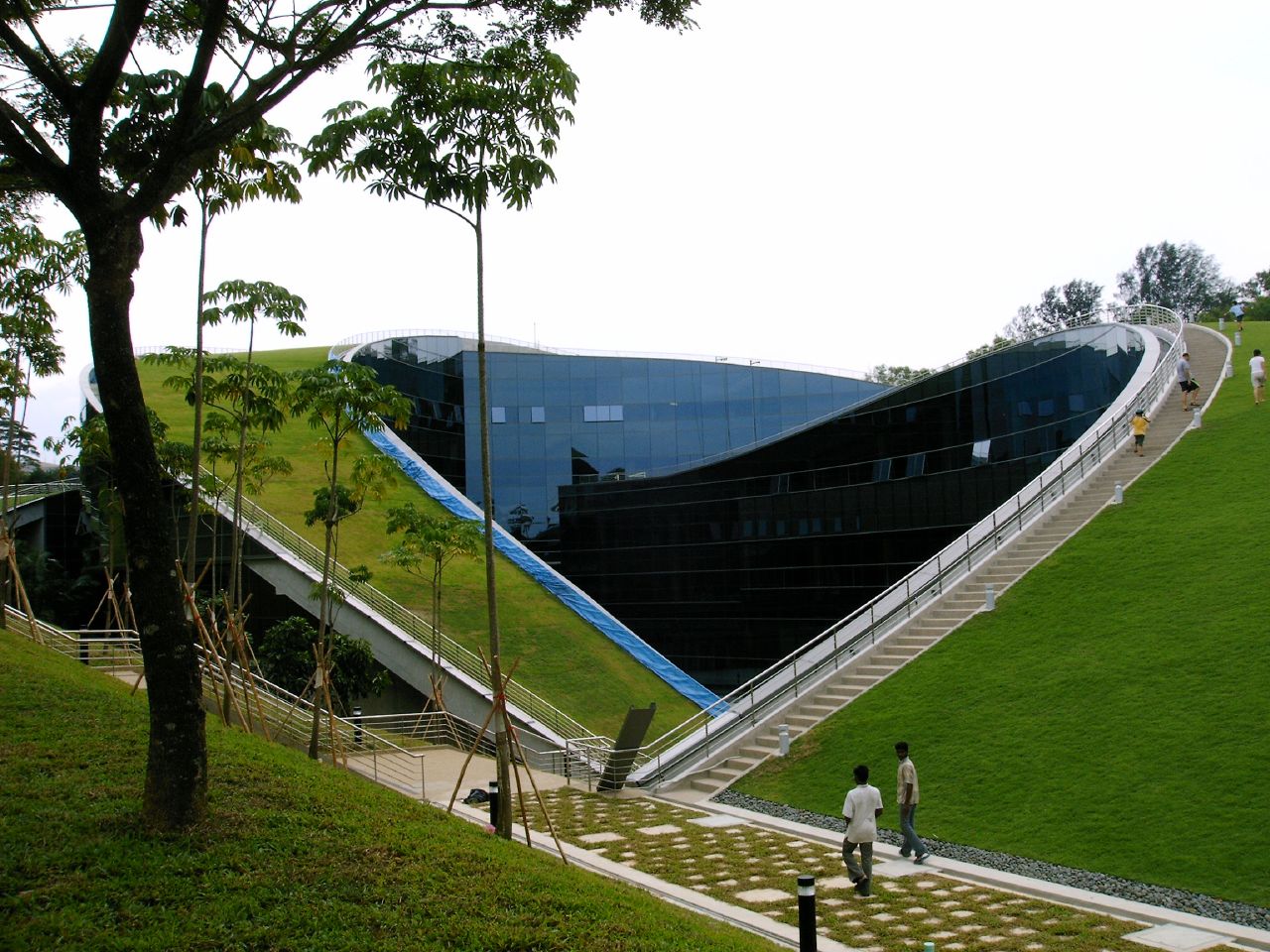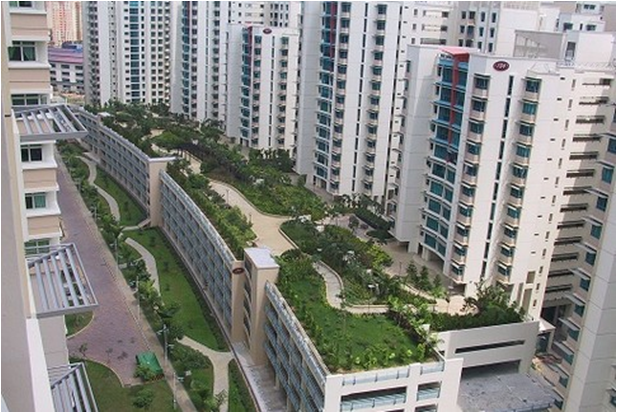
Nanyang Technical University, Singapore.
NASA's new report on the likelihood of megadrought in the Central and Western United States is a harsh yet timely wake-up call for cities and the need for green infrastructure. It's ironic but those taking the earliest green infrastructure leadership – Philadelphia, Portland, and Copenhagen – have historically had adequate rainfall and water supplies.
Meanwhile, Los Angeles and other global cities in extreme drought such as São Paulo and Beijingthat at least partially depend on their groundwater aquifers for drinking water, are now exploring howgreen infrastructure can be part of a climate-change resilient city's main arsenal in water retention or conservation.
With a business-as-ususal scenario, the joint NASA-Cornell and Columbia universities report projects climate change fueled multi-decade droughts for the Central and Southwest US on an order of magnitude not seen for 500+ years and worse, with intensity far beyond what has already been experienced during the past several extreme drought years in California, Colorado and Texas.
On a recent 70+ degree January day – historically warm even by Los Angeles standards but becoming the norm during the state's multi-year extreme drought – the sustainable city group from Autodesk and I met with Los Angeles Mayor Eric Garcetti's office along with top water officials at the Los Angeles Department of Water and Power (LADWP), the nation's largest municipal utility.
We explored how green infrastructure analytical and capital planning technologies developed byAutodesk (a client of my consultancy) and partner company, Impact Infrastructure, can model economic, environmental and social benefits. These would include recharging aquifers and preventing localized flooding in LA’s San Fernando Valley and other city districts.
Autodesk is also preparing to work with Washington, DC and Atlanta on district and metro area green infrastructure modeling and prioritization approaches.
Impact Infrastructure, meanwhile, helped develop Autodesk's new AutoCASE automated triple-bottom line project analysis software, which has been successfully used to model the costs and benefits of green infrastructure in arid cities such as Fort Worth, Texas and Tucson, Arizona.
The use of AutoCASE/Impact Infrastructure
AutoCASE/Impact Infrastructure calculates economic, social and environmental benefits of green stormwater infrastructure, including flood prevention, reduced urban heat island impact, reduced greenhouse gases, increased public recreational values and improved air quality.
According to John Parker, Chief Economist of Impact Infrastructure, "Tucson is teaching the world that water is a scarce and precious, but undervalued, resource that is going to get scarcer and more valuable: because of its many benefits, nature's green infrastructure is often the best way to deal with problems of water scarcity, quality, flooding, and urban heat islands."
Megadrought and Megacities
Globally, the need for integrated development and water planning is just as urgent. In Beijing overuse of underground aquifers has caused ground subsidence – sinking – inducing cracking pavement, roads and buildings. Fresh water is rapidly being withdrawn from metro-area aquifers that have been the primary source of drinking water for the city of 20 million (full-time) to 30 million (including part-time) inhabitants.
Major climate change-exacerbated drought and industry-induced water shortages have forced the city to import water long-distance (like Los Angeles does for much of its water supply) from a national South-North water diversion project. Indeed, Beijing is currently perhaps the most water-starved megacity in the world, but there are other cities poised to achieve that dubious status.
In 2013, Common Current advised the Beijing metro government on methods by which to systematically capture and reuse its stormwater, which often falls as rain during July and August in torrents that overflow the streets and wash off pavement into stormwater outflow systems. As the climate has been warming, much of the rest of the year is now almost devoid of major precipitation.
Besides banishing the lawn for use in landscaping (especially when used as pure decor in office parks, on freeway embankments, and around retail developments), Beijing needs to use urban planning, standards and new technologies to make low-impact development (LID) the guiding and enforceable rule so it can recharge its vanishing aquifers with fresh water, while also controlling its sometimes-deadly seasonal flooding.
Superstar Soil
Green infrastructure uses LID such as permeable pavement, bioswales, filter strips, rain gardens, green roofs, catchment basins and planters designed as part of the built environment to naturally filter precipitation and run-off through soil, gravel, sand, compost and other absorptive media, instead of letting pavement or rooftop run-off wash straight into storm drains.
Pollutants are naturally filtered by green infrastructure through its main component, healthy soil. Native trees or plants can be major ingredients of green infrastructure, but healthy soil is the primary component of most urban redevelopment projects or engineered systems.
Healthy non-compacted soil, even in cities with poor soils, can be improved through the use of low-cost practices including composting, amendments and mulching. Of course trees – where they are appropriate – and native perennial plants tremendously boost soil's water retention and carbon sequestration, while adding shade, wildlife habitat and more pleasant overall environs.
São Paulo, another megacity on the precipice of global climate-change water crisis, is facing a growing water supply shortage where taps are running dry and some of its 23 million citizens might be soon forced to abandon the city. I moderated a panel last week in the Silicon Valley with Marcelo Ignatios, Superintendent of São Paulo's sustainable infrastructure programs, who outlined the programs the city has developed to incentivize green infrastructure with tax credits, air development rights and other innovative programs.
The city has produced a sophisticated map of its native soils and types of water retention qualities (see slide 13) in order to limit runoff and restore aquifers and creeks feeding its nearly-depleted reservoirs.
A biological inventory of São Paulo state concluded that 48 percent of its surface was covered by impermeable surfaces or completely devoid of vegetation.
At the time of the survey, forests still covered 21 percent of the state, but they are rapidly vanishing to development.
The city now is realizing that its fate is tied up with its forests and vegetation as much as are the fates of endangered local inhabitants such as the howler monkey or the red-breasted toucan: forests, vegetation and healthy soil retain water, cool cities and recharge aquifers. Indeed, recent research has posited that the ecosystem services of forests, vegetation and green infrastructure may help stabilize regional water cycles.
Singapore "Global Hydro-Hub" Model

Nowhere else is urban green infrastructure planning and design combined with other water reuse and conservation approaches more successfully and artfully than Singapore.
Originally lacking a sustainable fresh water supply as Singapore's population grew, it was forced to import water from Malaysia, an agreement that terminates in 2060.
Building upon the foundation of a visionary 1972 water master plan, Singapore launched a bold campaign in the early 2000's to become the world's foremost knowledge and practicing city center for green infrastructure, smart city water management technologies and wastewater reuse.
Singapore's Utilities Board markets a bottled "New Water" product that comes from triple membrane filtrated sewage treatment plants.
The crowning glory of Singapore's water savvy is the engineered surface of its city, much of it designed or retrofitted in green infrastructure.
Two thirds of the city's surfaces – rooftops, parks, medians, sidewalks, roadways – capture rainwater and convey it or pump it via microprocessor-controlled channels or tunnels to 18 reservoirs.
LID in Singapore contributes 35 percent of the city's water supply, with much of it integrated into innovative architecture as well as landscaping for pedestrian or recreational amenities. Eventually, the city has plans to turn ninety percent of its surface area into rainfall catchment.
Singapore not only demonstrates for the world the design and engineering potential of urban water reclamation through green infrastructure, but it shows how doing so can create an international center of excellence that can result in substantial economic returns in water-sensitized forms of urban planning, architecture, engineering, information technology and green infrastructure innovation (Singapore's 2014 International Water Week event alone resulted in $11.2 billion USD in announced deals or contracts).
The rest of the water-challenged world – that includes or will include most of our cities – should take careful notes, and get very busy.





